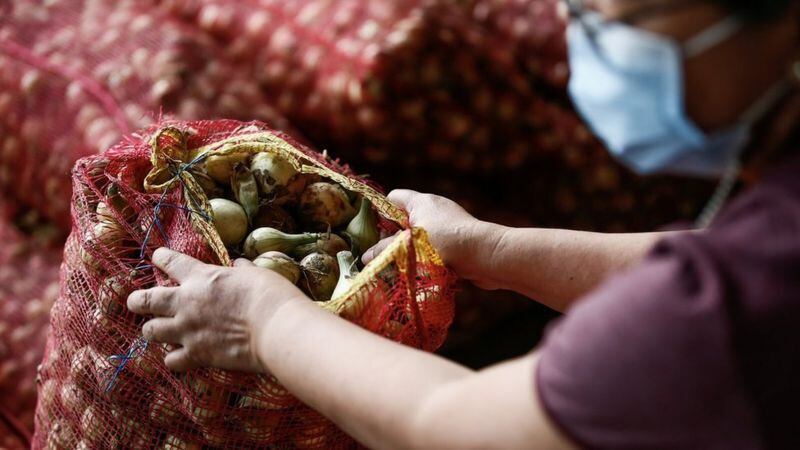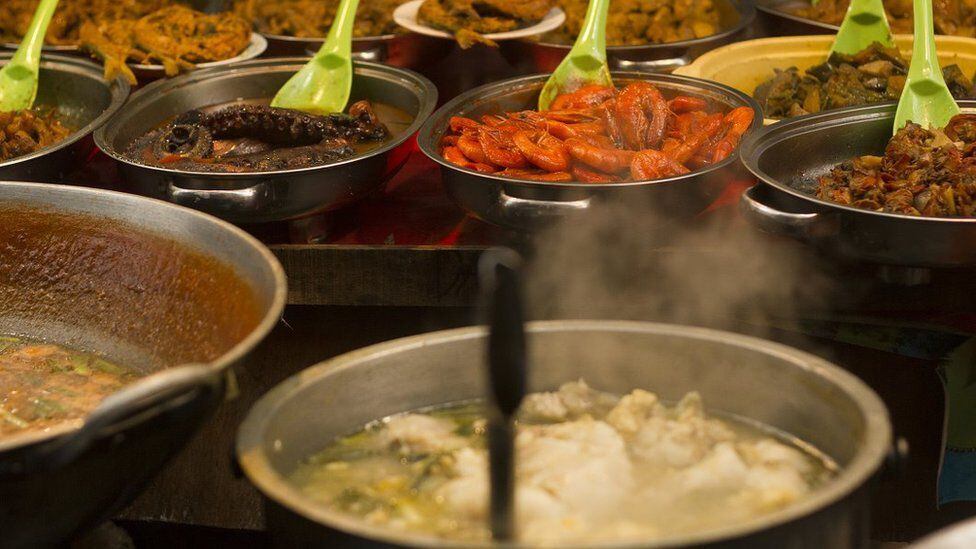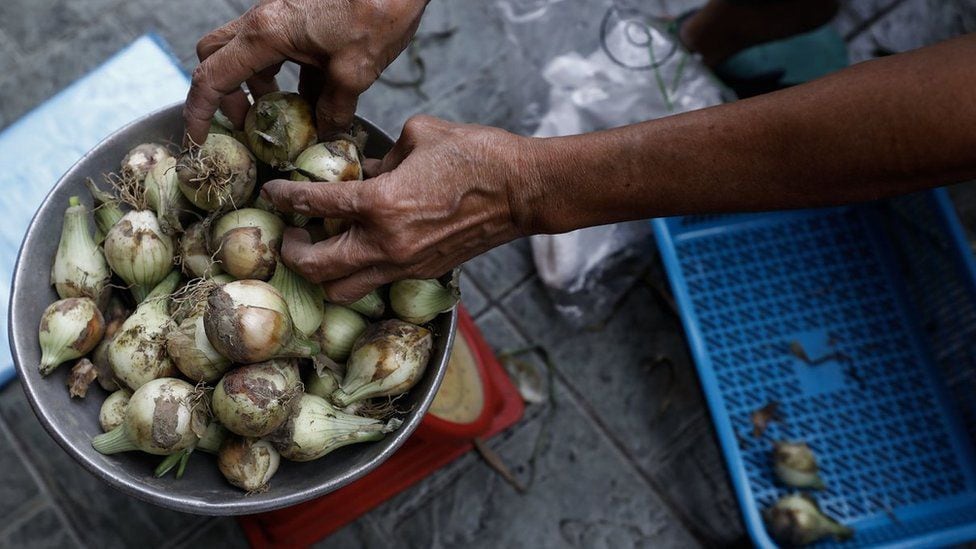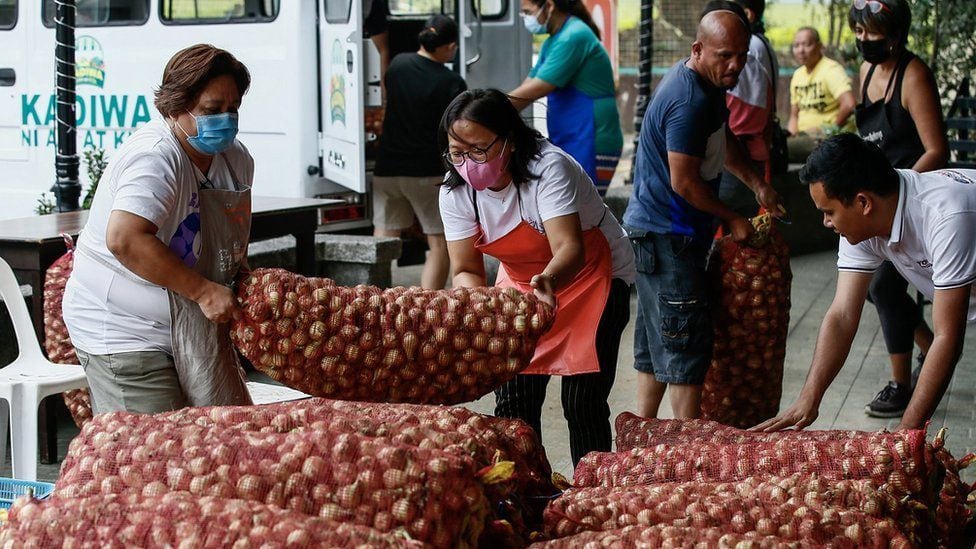In many parts of the world, onions are a staple food while meat is more of a luxury, but in Philippines its price has skyrocketed above chicken or beef.
The custom of sautéing with garlic and onion in the Asian country dates back to the time of the Spanish colonization, which lasted between 1521 and 1898 and greatly influenced its cuisine.
LOOK: What is sought by the unprecedented cryptocurrency law approved in El Salvador that redoubles Bukele’s commitment to bitcoin
However, for almost a month, onions have become a luxury item for Filipinos. After a rise in prices, vegetables cost more than many types of meat.
A kilo of red and white onions fetched about US$11 this week, while a whole chicken could be bought for about US$4.
Is figure is higher than the daily minimum wage in the Philippines, which is around US$9.
With rising prices, the country’s authorities have even seized illegal onion shipments.
In early January, US$310,000 worth of onions from China were intercepted after a attempt to smuggle them in like clothing.
On social media, Filipinos have posted humorous messages criticizing the government, which many blame in part for the current situation.
“Goodbye chocolates, hello onions. The sibuyas [cebolla] has the potential to become the best pasalubong [regalo] to take home in the Philippines,” a Filipino living in the United States posted on Twitter.
“We came back with onions instead of chocolates from our trip to Saudi Arabia,” wrote another.
Goodbye chocolates, hello onions ????. Sibuyas has the potential to be the best pasalubong in the Philippines. pic.twitter.com/38GR9aQMiu
— Jv Villar (@_jvvillar) January 5, 2023
Another user who also traveled to the United States shared an image of a jar of onion powder.
“As onions have become as valuable as gold in the Philippines, I wanted to buy these jars to take home as a gift,” it reads.
“But I have visited five supermarkets and all stocks are sold out”.
“I asked a saleswoman what happened and she told me that ‘Filipino tourists had bought them all,'” she says.
Since onion is like gold in the Philippines, I wanted to buy these to bring home and give away as gifts. But I have visited five supermarkets and all the stocks are gone. I asked one salesgirl what happened and she said, “Oh, the Filipino tourists bought a lot. I wonder why…???? pic.twitter.com/i351ri7kor
— LADLADofficial????️???? (@LADLADofficial) January 12, 2023
Nicholas Mapa, a senior economist at ING bank who lives in the Philippine capital Manila, said some restaurants even They have stopped selling products that contain onions.
The portions of onion rings that normally come with burgers, for example, they have disappeared from some menus.
“They can’t price their produce correctly or simply can’t supply onions,” he told the BBC by email.
Some companies are looking for alternatives.

the size of a grape
Chef Jam Melchor, founder of the Movement to Preserve the Culinary Heritage of the Philippines, has been looking for replacements.
Finally, he has turned to a native type of onion called lasona, which has a different flavor than traditionally used varieties and is very small, about the size of a grape.
“Both restaurants and the general population have suffered from the situation. The current price of onions is too highso we are trying to make the most of the alternatives that are available to us,” he told the BBC.
“Onions are very important to the local cuisine. They are present in almost all the dishes we prepare here. It is a crucial ingredient in all Filipino cuisine.Melchor added.
View this post on InstagramA post shared by Jam Melchor (@chefjamme)
Why have onions become so expensive?
Nicholas Mapa says there are at least two factors behind the rise in prices.
Department of Agriculture projections released in August indicated that the country would produce fewer onions of the necessary
The harvest was worse than expected as the Philippines was affected by a big typhoon between august and september.
“Unfortunately, onion imports started late, only after the prices will skyrocket and very close to the harvest period, which is in February,” explained the economist.
In the first week of January, the government approved the import of about 22 million tons onion to try to normalize the supply and control prices.

For some experts like Fermín Adriano, who was once an adviser to the Department of Agriculture, the management of this has been a failure of the current administration.
In his opinion, since the government knew that domestic production was low, it should have ordered enough imports to at least match the supply with the expected demand.
On social media, some Filipinos see a connection between the disorganized management of the agricultural sector and the fact that the controversial president Ferdinand Marcos Junior, known as “Bongbong” and elected last year, he proclaimed himself Minister of Agriculture.
And this despite his lack of experience on the subject.
Is son of former dictator Ferdinand Marcos, who led a brutal regime in the Philippines in the 1970s and 1980s, and was overthrown by popular protests that forced the family to flee the country in 1986.

In 1991, Bongbong returned to the Philippines and embarked on a political career.
He was governor, representative and senator before being elected president.
Part of Marcos’s campaign was based on trying to sell voters on the idea of that the dictatorship was a “golden age”an expression that many have used ironically on social networks, jokingly writing that the “gold” to which the politician was referring was the price of onions.
The third most produced vegetable in the world
Cindy van Rijswick, an analyst at Rabobank, says that the Philippines is traditionally an onion-importing country: it consumes more than it produces.
This need fluctuates a lot: while in 2011 it needed five million kilos, in 2016 it went to 132 million.
“The country usually buys from India, China and the Netherlands, depending on price and availability“said the analyst.

One of the reasons for this dependency is that the most of the Philippine onion production, given the climatic conditions, it is of varieties with a short useful life.
This is different from what happens, Van Rijswick adds, in some regions of northern Europe and North America, where, given the right conditions, onions can be stored for up to a year.
“In most of the world, onions are among the top three most consumed vegetables”
“For this reason, the onion is also the third most produced vegetable in the world in terms of volume”
“Only tomatoes and cucumbers have a higher production volume,” says Van Rijswick.
Also in Brazil
The rise in the price of onions it is also a problem in other countries.
To a lesser extent, onion prices have risen in other nations.
An example is Brazil, which had the highest accumulated increase in 2022: 130.14%, according to official figures.
Among the reasons for the increase are the reduction in the amount of cultivated land and the higher costs of production, since materials such as fertilizers and pesticides were affected by international exchange rates and the war in Ukraine.
Source: Elcomercio
I am Jack Morton and I work in 24 News Recorder. I mostly cover world news and I have also authored 24 news recorder. I find this work highly interesting and it allows me to keep up with current events happening around the world.

:quality(75)/cloudfront-us-east-1.images.arcpublishing.com/elcomercio/TS7EJMYNINDPXNCUOU5HYXZHTM.jpg)

:quality(75)/cloudfront-us-east-1.images.arcpublishing.com/elcomercio/CWZVXJ5QHZDXHFY4B43EENW5ZU.jpg)
:quality(75)/cloudfront-us-east-1.images.arcpublishing.com/elcomercio/PV5GHT3BLRBTRDXGKMULPWZRGU.jpg)
:quality(75)/cloudfront-us-east-1.images.arcpublishing.com/elcomercio/XSXIZK2F6ZDSVHU7ULEK4DKLUQ.jpg)
:quality(75)/cloudfront-us-east-1.images.arcpublishing.com/elcomercio/A4VIZMT3XVDL3GFPOYC3FCP4OM.jpg)
